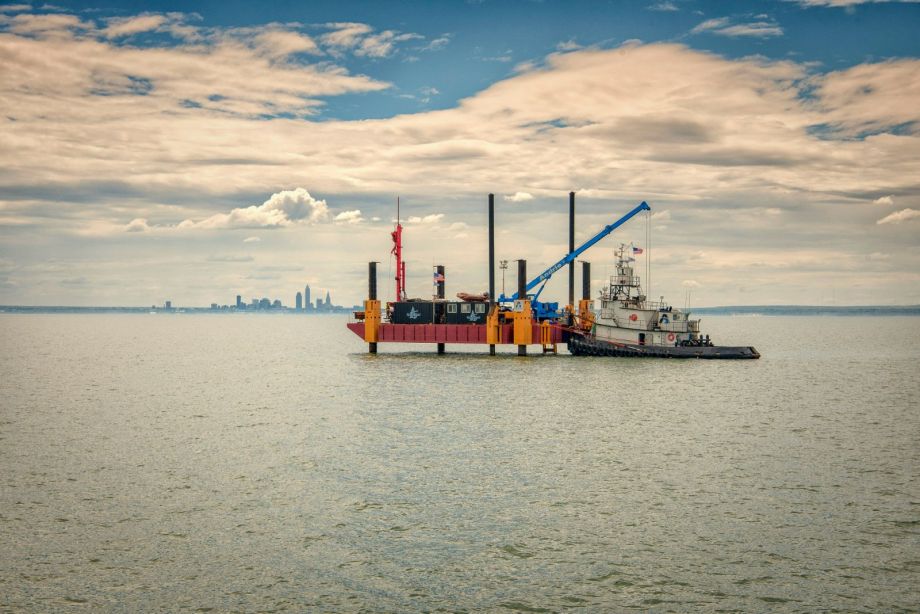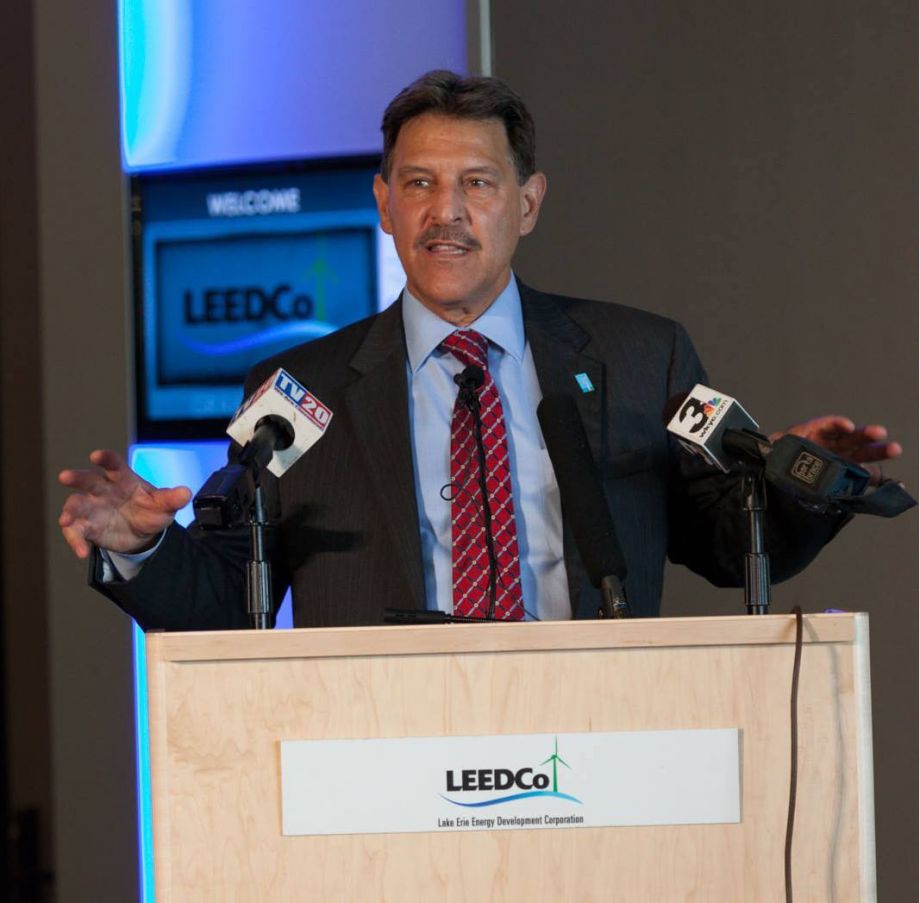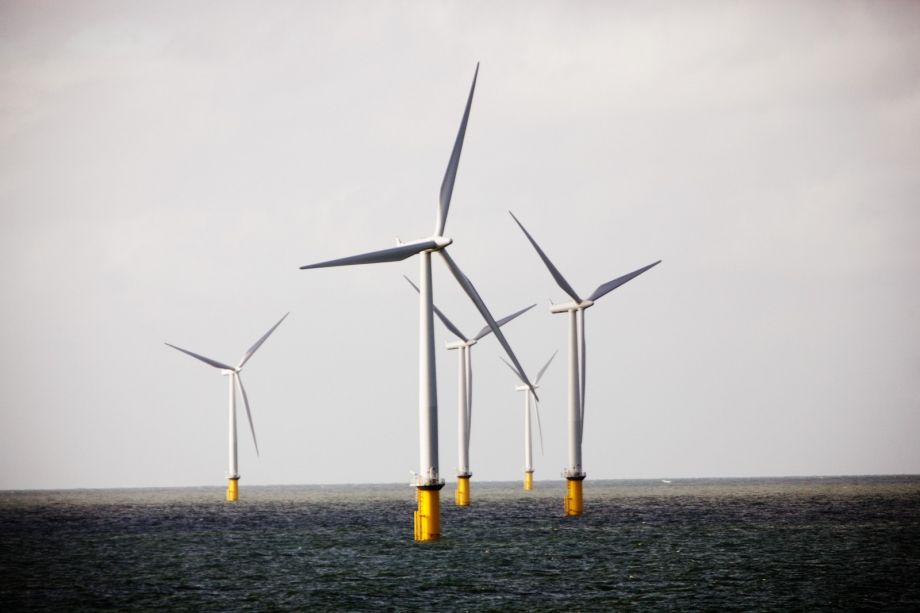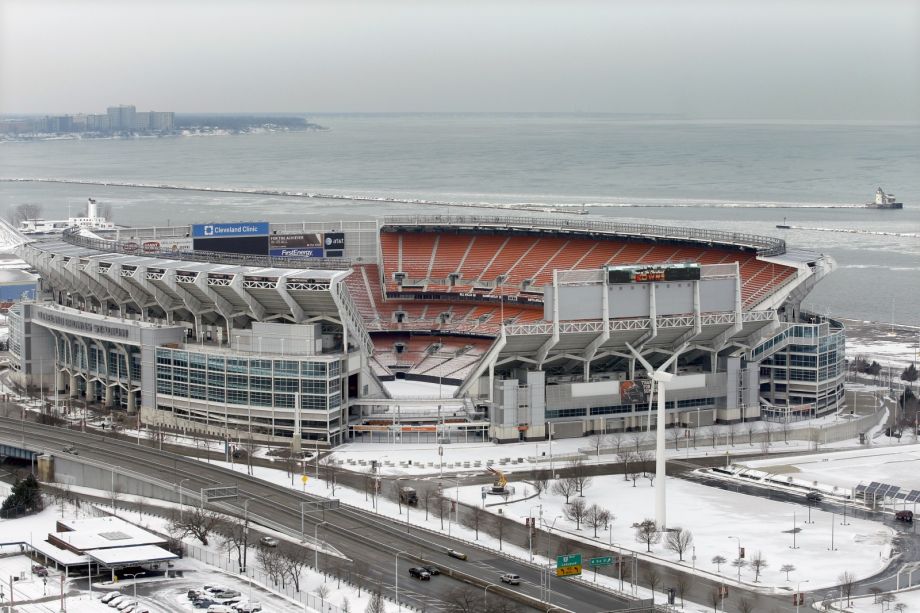Are You A Vanguard? Applications Now Open
This is your first of three free stories this month. Become a free or sustaining member to read unlimited articles, webinars and ebooks.
Become A MemberLorry Wagner has spent more than a decade attempting to convince the world that Cleveland has all the ingredients to be a giant in the world of renewable wind energy. The argument hasn’t always worked, but the president of the Lake Erie Energy Development Corporation (LeedCo), by now, has mastered the math.
The Great Lakes, he says, span 94,000 square miles of surface water, with Lake Erie rippling out 10,000 miles all on its own. The U.S. coastline for the Great Lakes adds up to more than 4,500 miles, more than double the span of the Atlantic coastline of 2,165 miles and more than triple the 1,293-mile-long coastline of California, Oregon and Washington.
Wagner believes that the offshore wind energy industry has focused its attention on the Atlantic Ocean because that’s what East Coast analysts know. The first such project launched in 2016 near Rhode Island’s Block Island. Also, Maine, Massachusetts, New York, Virginia, Maryland, Delaware and New Jersey have put policies in place to try to become the U.S. leader. “But almost everybody who we bring to Cleveland to learn about our project, and they see Lake Erie for the first time, they say, ‘Holy crap, that’s an ocean out there,’” he says.
Ocean or not, in 2019, Lake Erie will be the proving waters for the region’s first offshore wind farm, developed by LeedCo in partnership with a new for-profit company, Icebreaker Windpower. That company was created by the Norway-based Fred.Olsen Renewables, which has numerous onshore and offshore wind energy projects in Europe.

A 90-foot barge is used to extract soil samples and perform pressure tests in Lake Erie, where Lake Erie Energy Development Corporation plans to erect six wind turbines next year. (Photo by Mort Tucker/LeedCo)
Named Icebreaker for its six 3.45-megawatt wind turbine foundations that have the ability to break the ice during the winter, the pilot project is expected to start construction next year on Lake Erie, just 8 miles northwest of downtown Cleveland. By fall 2019, the first 479-foot-tall turbines are expected to be up and running, generating power that will flow through a 12-mile submerged transmission line to a new substation at Cleveland Public Power’s Lake Road. While LeedCo will continue to play a role in development, Icebreaker Windpower will build, operate, maintain and own the wind farm.
Wagner doesn’t fit the mold of your average renewables startup dude. The 66-year-old got his doctorate from Purdue University and was a nuclear fusion engineer who came up in big energy. He spent a large part of his career advising large corporations on how to automate their plant facilities and improve the efficiency of their manufacturing and electrical systems. But while the pivot toward offshore wind energy may seem like a surprise to some, Wagner’s passion for the water far predates his move to LeedCo.
An outstanding swimmer in high school, Wagner was on the Purdue swim team and has coached many college and high school teams since then. He has grown to become an accomplished scuba diver as well as the chief engineer for the World Champion “Spirit of Norway” offshore power boat. He also belongs to the Cleveland Underwater Explorers, whose members investigate sunken ships in Lake Erie, and keeps a 42-foot racing boat moored on the lake. (The boat, named Perelandra after a C.S Lewis novel about travel to the sweetwater-covered planet Venus, comes in handy when Wagner needs to go out and scout the winds and currents for Icebreaker.)
Wagner’s years on the water played a key role in bringing the Lake Erie project’s Oslo-based partner on board. At a wind energy conference in the Canary Islands in 2013, Wagner happened to meet the company’s namesake, Fred. Olsen IV. The 88-year-old Norwegian billionaire started investing in wind energy technology 20 years ago with his company and today is one of the largest independent wind energy producers in Europe. But it wasn’t only a love of water that the two men had in common. “We found out we had both done international racing of powerboats and sailboats, and shared a mutual interest in scuba diving and the maritime history of shipwrecks,” Wagner says.
They also shared a deep interest in the Great Lakes. “Once I told him I was from Cleveland, he started rattling off the water depth of Lake Erie, how the glaciers formed the lakes, the sediments on the bottom, and the wind speeds and the ice cover during the winter,” Wagner says. “In the course of our conversation, Olsen asked me ‘why the United States would consider building its first offshore wind farm anywhere but the Great Lakes.’ I told him, ‘That’s what I’ve been saying for years.’”

Lorry Wagner (Credit: Lake Erie Energy Development Corporation)
While most of the capital for the $120 million project will come from Olsen Renewables, public and philanthropic dollars also play key roles. The United States Department of Energy has earmarked about $50 million for the project. The Cleveland Foundation has given LeedCo (or its predecessor) about $1.7 million.
“We cannot afford to miss the next major economic change in the world like we did with the information technology field,” says Ronn Richard, president and CEO of the Cleveland Foundation. “What we are doing in long-term economic planning with this project is to make Cleveland one of the epicenters in this country for solar and wind energy production and usage, like implementing and researching microgrids and cost-control efficiencies, along with cleaner air and water. We can change the entire image of Cleveland from a Rust Belt city to a city of the future. This kind of initiative would help Cleveland reclaim its place as a major economic and cultural force on the world stage as we build a reputation as a center for advanced energy.”
City government, too, has come in as a partner. Cleveland has signed a memorandum stating that Icebreaker will be tapped to provide the municipal utility Cleveland Public Power with 25 percent of its generation at an undisclosed price. The statewide energy company, American Municipal Power, has also agreed to purchase 30 percent of the project’s generations. The city’s Cuyahoga County also signed a 10-year deal to buy 8.6 percent of the project’s output. For local government, the argument is both environmental and economic.
“We have always seen the huge benefit of having wind energy produced just a few miles offshore from Cleveland. It will be an impetus for business to think of us when relocating or expanding their businesses if they are thinking of cheap and renewable energy as one of the factors they use in that decision-making,” says Matt Gray, the city’s chief of sustainability.
Then there is the symbolism of generating clean energy on a lake that gained infamy in the 1960s when fires burned in the Cuyahoga River as a result of the region’s toxic industry. “We used to use Lake Erie to dump the environmental pollution from our industries and now we want to use it to create cheaper power for our industries and households,” Wagner says.
Wagner became interested in offshore wind energy in the early 2000s when his engineering company was chosen to help design a symbolic windmill outside of the Great Lakes Science Center in downtown Cleveland. “I could see from that experience that the future of energy production was not in old coal-burning power plants,” he says.
Meanwhile, the first commercial offshore wind farm was built in Denmark in 1991. When Wagner began to read up on that country’s wind industry, he began to consider the opportunities sitting right off the coast of Cleveland. “In Europe, we have seen that the countries who have been very early adopters in renewable energy experienced some pushback when the onshore wind mills hit a certain level,” Wagner says. “In some ways, it was too much of a good thing and for that reason, it helped the Europeans to realize the growth area was offshore. Think of it this way: Offshore wind turbines need a massive substation where the transmission line from the mills hits shore. We have that, and most of the Great Lakes urban areas do, also. But most of the Atlantic shore areas are massive beaches. Think of the political and cultural and financial issues in getting past that.”

Wind turbines in an offshore wind farm in Denmark, a pioneer in wind energy (AP Photo/Jasper Carlberg/POLFOTO)
One of the innovations that has helped the project move forward is an engineering solution imported from Denmark. Instead of attaching the turbine’s foundation to the lake floor through an expensive, ecologically risky and time-consuming undersea drilling process, Olsen plans to use a suction cup-like technology called mono buckets that is similar in design and engineering to technology used for oil drilling platforms. The mono bucket technology was developed by Danish engineers in 2002 and was eventually acquired by Olsen’s company. This will be its first test in U.S. waters.
“We see this Icebreaker project as a significant piece to the puzzle of developing offshore wind energy in the U.S. market,” says Kristian Jacobsen, the product manager for Universal Foundation, a Fred.Olsen Renewables subsidiary based in Denmark that manufactures and installs the mono bucket. “If we can demonstrate the effectiveness of the mono bucket in Lake Erie, we can then use what we learn from that to the far more complex site conditions we will likely encounter in the Atlantic Ocean off the northeast U.S. coast.”
In March, the U.S. Department of Energy’s National Renewable Energy Laboratory released a study in March that described the Great Lakes region as “very good” for offshore wind production. “The general absence of extreme meteorological ocean events (wind and waves) helps keep costs low,” the study’s authors wrote. They also found that windmill farms in Lake Michigan, Lake Erie and Saginaw Bay in Lake Huron had the best possibilities for offshore wind power due to shallower water than Atlantic Ocean windmills, and “multiple sites with strong wind resources that are close to shore.”

With Lake Erie in the background, a wind turbine that provides energy for the neighboring Great Lakes Science Center, is seen outside the Cleveland Browns' stadium. (AP Photo/Amy Sancetta)
“That’s what makes the most sense — being close to where people live and having the transmission lines already in place close to where the turbines are,” says Fred Beach, assistant director for policy studies at the University of Texas Energy Institute. “We have the most wind energy in the country in Texas, but we had to spend about $8 billion in transmission lines to get it to the cities. If you install these turbines in Lake Erie, you are putting 7 or so miles of electric transmission line on the lake bed, and not several hundred miles of wire lines on the land.”
In Cleveland, that 7 miles of power transport line on the Lake Erie bed from the Icebreaker windmills to downtown becomes even more intriguing when you look at the full reach of the power grid. The “Lake Erie Loop” transmission line hooks into other lines in Buffalo and Detroit and Canada.
In 2003, Cleveland’s grid made news when a power line south of the city touched a tree limb and short-circuited, causing a power outage in New York City. Knowing that, it’s no exaggeration to say that by 2019, the megawatts generated on Lake Erie could be lighting up apartments in Brooklyn. In that national reach, Wagner and others see a huge opportunity.
“We will be generating energy the country will use and creating jobs for the region,” says Wagner. “Wherever offshore wind is located you do get a boost in many ways, be it from the maritime activity to engineering research to the financial benefits of manufacturing. There will be a direct benefit to a city like Cleveland from both jobs and clean energy.”
And while President Donald Trump and others continue to promote coal and other traditional forms of power, there is bipartisan support in Washington for offshore wind. In August, U.S. Senators Susan Collins (R-Maine) and Tom Carper (D-Delaware) introduced a bill that would provide a 30 percent tax credit to those investing in offshore wind. The bill, “Incentivizing Offshore Wind Power Act” was co-sponsored by 10 other senators, including Sen. Sherrod Brown (D-Ohio). The provisions of the bill may be included in the tax code revisions that will be likely coming up for a vote before the end of the year.
“State legislators are seeing the many benefits, and the jobs created cannot be ignored,” Cleveland Foundation’s Richard says.
Wagner frames his conversion from big energy to offshore wind around the arc of his own life. His wife of 34 years, Susan, died four years ago from cancer. Their twin boys are now 24 years old and pursuing their careers. “Things change in everyone’s life,” he says. “It’s not so much I am seeing things differently now, but the long-term aspects of this are maybe more clear to me now. From the beginning, we saw this as a project that would use the Great Lakes as a clean wind energy producer. This is as much about adapting to the transitional economy as anything else.”
“And we keep telling people how simple this is,” he continues. “We are presenting an alternative to creating electricity from the past ways of having big and dirty power plants on the shore of the lake. We can do it cleaner and cheaper with windmills miles offshore and get the economic benefits for a region that needs that change. That’s why we know we are just at the beginning of something real strong, economically and environmentally, for this part of Ohio. That’s why we’ve kept at this for so long.”

20th Anniversary Solutions of the Year magazine